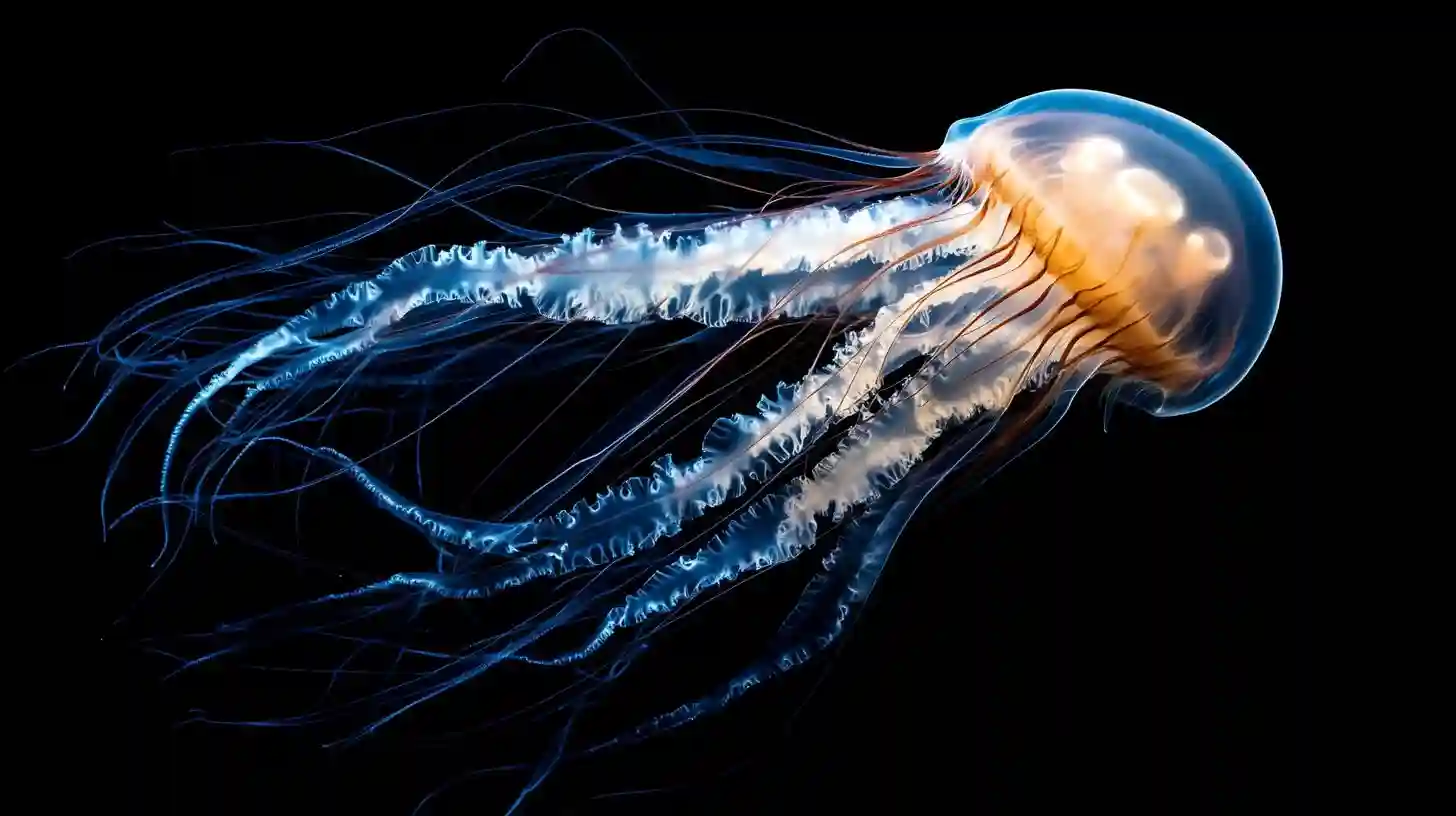
Jellyfish are fascinating creatures that have captivated the human imagination for centuries, embodying both beauty and mystery in the vast, enigmatic expanse of the ocean. With their ethereal form and graceful movements, they drift through the water, often mesmerizing observers with their translucent bodies and subtly pulsating appendages. Found in every ocean, from the surface to the deep sea, they thrive in various environments, showcasing their remarkable adaptability. Their jelly-like consistency, a composition of around ninety-five percent water, gives them a unique appearance that allows light to refract through their bodies, creating a mesmerizing spectacle.
These astonishing creatures belong to the phylum Cnidaria, which also includes corals and sea anemones. There are over two hundred recognized species of jellyfish, varying greatly in size, shape, and color. Some species can measure just a few centimeters across, while others, like the lion's mane jellyfish, can reach an impressive diameter of more than two meters. Their bodies are characterized by a gelatinous bell-shaped umbrella, or medusa, from which long tentacles dangle. The tentacles are equipped with specialized cells called nematocysts, which serve as both a means of capturing prey and a defense mechanism against predators. When triggered, these cells release a potent venom, which can incapacitate smaller fish and planktonic organisms that jellyfish feed upon.
Jellyfish have a unique life cycle that involves alternating stages between sexual and asexual reproduction. Adult medusae produce eggs and sperm, and once fertilization occurs, the fertilized egg develops into a larval stage known as a planula. This planula eventually settles onto a substrate, transforming into a polyp, a stationary form that can reproduce asexually through budding. The polyps may remain in this state for extended periods before reverting back to the medusa stage, completing the cycle. This versatility allows jellyfish to thrive in various oceanic conditions, demonstrating their ability to adapt to changing environments.
Their ecological role is significant, as they form part of the marine food web. Jellyfish serve as food for a variety of animals, including sea turtles, some species of fish, and even certain birds. However, the proliferation of jellyfish populations can also signal environmental changes and stressors in marine ecosystems. Overfishing and climate change have been linked to the increasing frequency of jellyfish blooms, where their populations surge dramatically, often leading to significant ecological consequences. When these large blooms occur, they can disrupt local fishing industries, damage fishing gear, and even pose risks to human activities, such as power generation, where jellyfish can clog water intake pipes.
Interestingly, jellyfish possess a relatively simple nervous system, which is organized into a diffuse nerve net rather than a centralized brain. This allows them to respond to environmental stimuli effectively, enabling essential functions like swimming and feeding. Their movement through the water is a rhythmic pulsing of their bell, propelling them forward by contracting and relaxing their muscular tissue. Although they are primarily passive drifters, their adaptations facilitate a surprising degree of maneuverability, allowing them to navigate through different currents and depths.
Research into jellyfish biology has been greatly facilitated by their unique properties. Their bodies contain bioluminescent proteins, which have gained attention in scientific studies for potential applications in biomedical sciences, including research on cancer. The study of jellyfish has also shed light on ecological health indicators, with scientists exploring their relationships with climate change and ocean acidification. As marine environments face unprecedented transformation, understanding jellyfish dynamics is increasingly important for predicting future changes and safeguarding marine biodiversity.
Culturally, jellyfish have inspired art, literature, and folklore across the globe. Their delicate, otherworldly beauty has led to their portrayal in various artistic expressions, from paintings to contemporary installations. In some cultures, they are viewed with wonder, while in others, they evoke fear due to their stings. This duality illustrates a broader human fascination with creatures that are both breathtakingly beautiful and potentially dangerous, embodying the complex relationship humanity has with nature.
In underwater realms, jellyfish are emblematic of the ocean's biodiversity and complexity. Their existence serves as a reminder of the mysteries that still lie beneath the surface, waiting to be explored and understood. As climate change exerts pressure on marine habitats, the study of jellyfish and their ecosystems will remain essential for maintaining the delicate balance of the ocean's ecological web, highlighting the interconnectedness of all marine life. Their continued presence in our seas reflects a deeper connection between humanity and the vast, unexplored territories of the underwater world.